Have you wondered why the cinema camera’s rig looks so sexy and intimidating? Luckily, CVP has released a video that explains it all. Read below how main components like camera, monitoring devices, lenses, controllers, rods, metadata devices, rangefinder, matte box, timecode/Genlock, movement captures, batteries, and more, come together as a perfectly coordinated orchestra so that the cinema camera will perform ideally on a movie set.

Cinema camera rig
When looking at a well-built professional camera rig that is used by a high-end production, you see a lot of stuff on it, that might look like overkill. However, every component has a certain role that is crucial for the camera operation. CVP has put together an educational video that explains all that pretty well. We simplified it even further and wrote key points so that junior filmmakers (and even seniors) can understand the logic behind each component.

Camera, lens, and the rest
At the heart of each rig is the camera. Generally speaking, the first component installed is the base plate. The base plate must be adapted for the specific use of the camera – shoulder, Steadicam, studio, etc. The base plate, as its title suggests, is the base for attaching other components, like lens support and accessories. Then you might consider assembling cages that allow you to expand mounting points, handles, and so on.

Viewfinder and monitoring
The viewfinder and monitor are crucial since they allow you to see the image you’re creating. Although there’s no necessity to implement both, you must use at least one. The monitor should be enough for studio work, however, when shooting outside, the viewfinder might be the ideal option. Then you have to think carefully about the best way to mount the EVF to the camera. There’re specific mechanic solutions that allow changing the angle of the camera while the operator’s eye is in a fixed position. Ideally, the EVF will be used by the operator and the monitor by the camera assistant. For that, you’ll need to choose the correct monitor arms, in order to secure the monitor according to the specific demand.
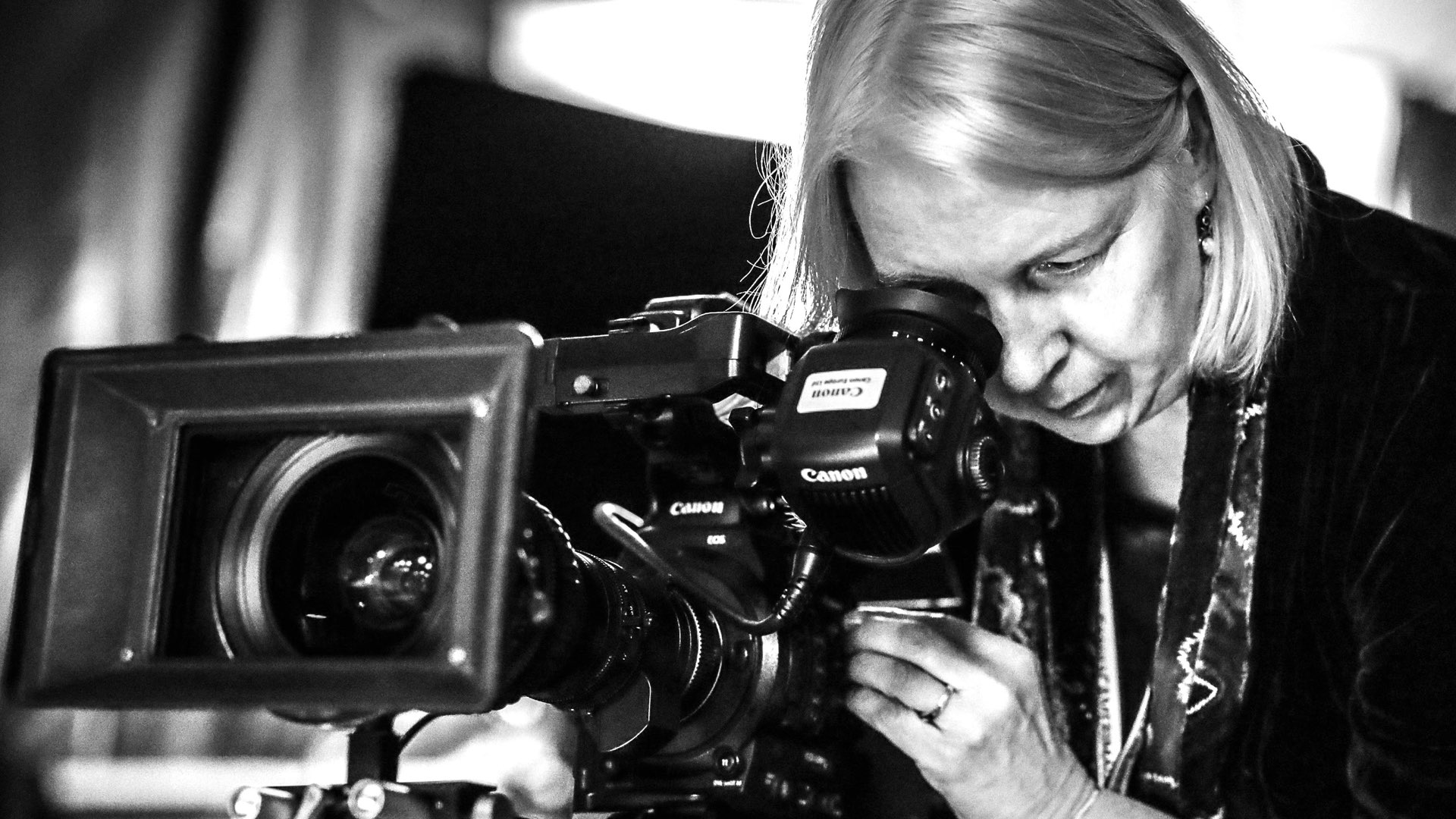
Wireless distribution systems
The wireless distribution devices located on the camera are being utilized for focus pulling, director viewing, and the video village. These are basically video transmitters that can deliver video streams straight from the camera to external monitors with zero latency. The zero-delay capability is essential for focus pullers who need to pull focus accurately and in real-time during the shoot. Furthermore, these devices are utilized for camera-to-cloud applications as well.
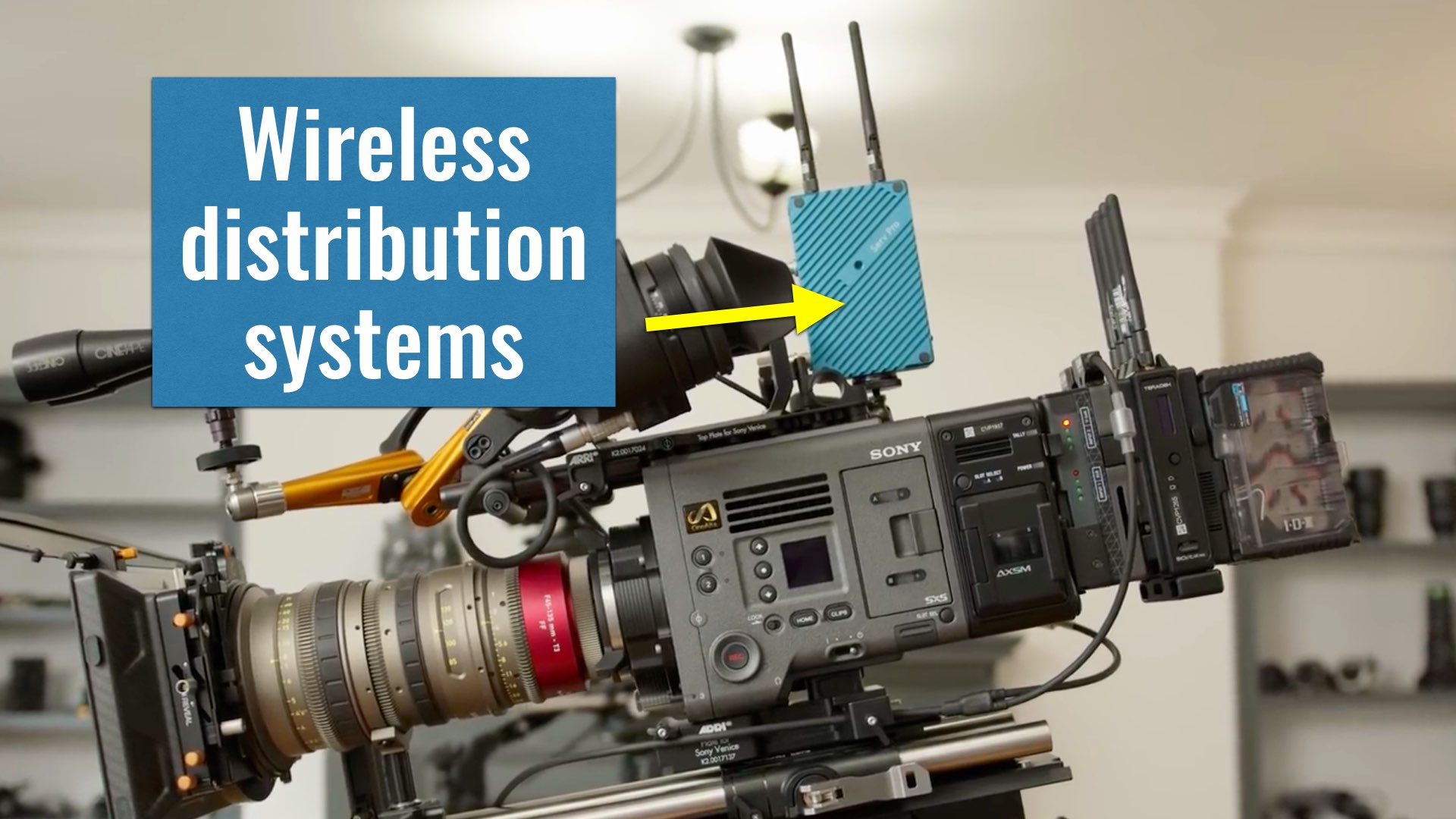
Controlling the cinema lenses
In most cases, high-end productions use cinema lenses which are completely manual lenses, Therefore, dedicated devices are attached to control the lens efficiently and accurately. Controlling these lenses can be done mechanically (follow focus) or electronically by devoted mechanical engines/motors called FIZ (Focus, Iris, Zoom) systems which are commonly attached to the rods below the lens. Furthermore, you would want to get your lens metadata by using protocols like Cooke/i. This metadata (T-Stop, calibration, and focus distance) might be vital for SFX workflow. For lenses that don’t have this protocol built-in, there are other solutions like 3rd party devices which also need to be attached to the rig.

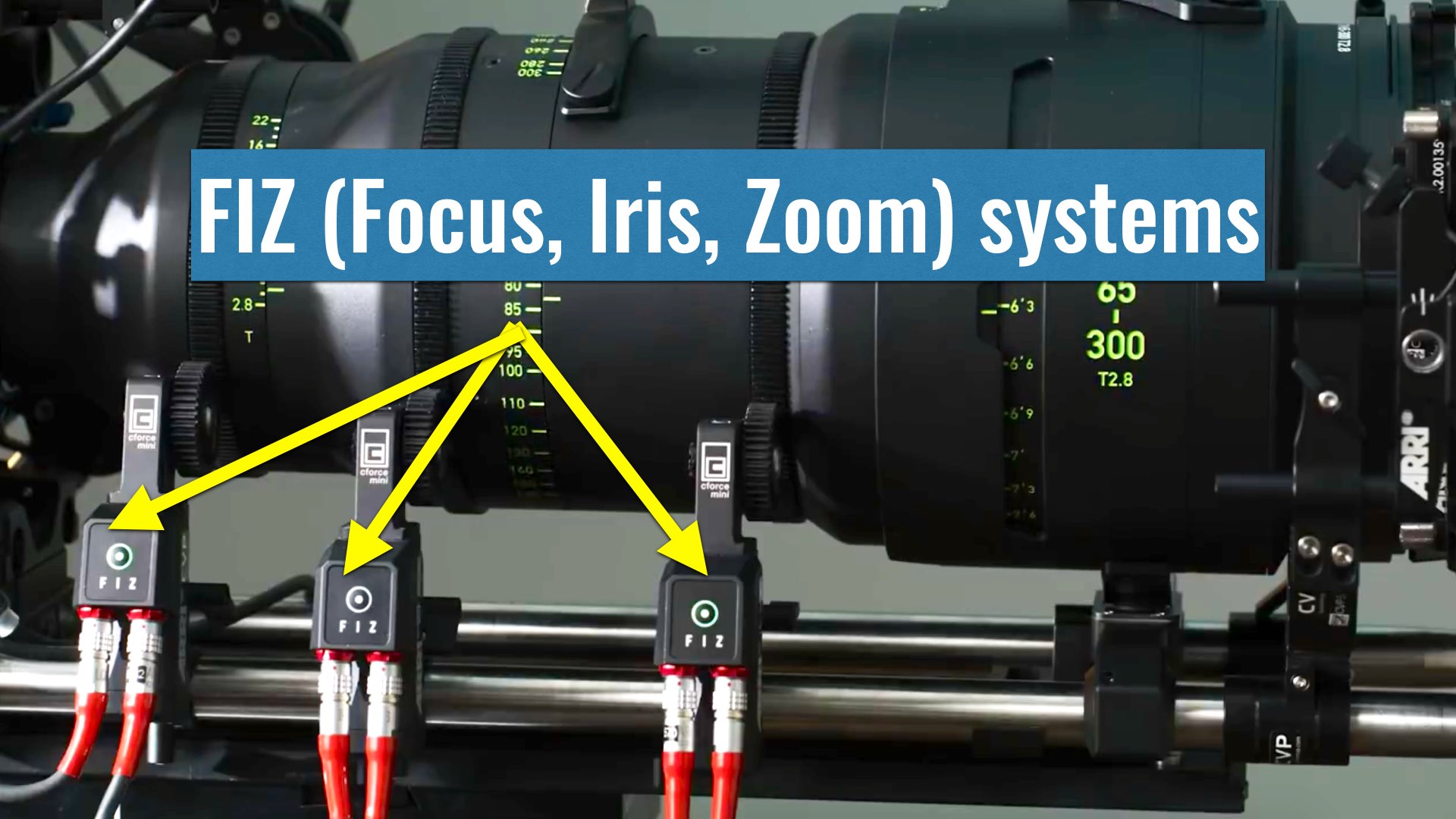
The Rangefinder
Many have asked about this strange-looking device located above the lens. This is called a Rangefinder, and it’s utilized to measure the distance of the subject in real-time. The distance is then displayed on a dedicated system, also located on the camera rig in a convenient place so focus pullers can read the data easily.
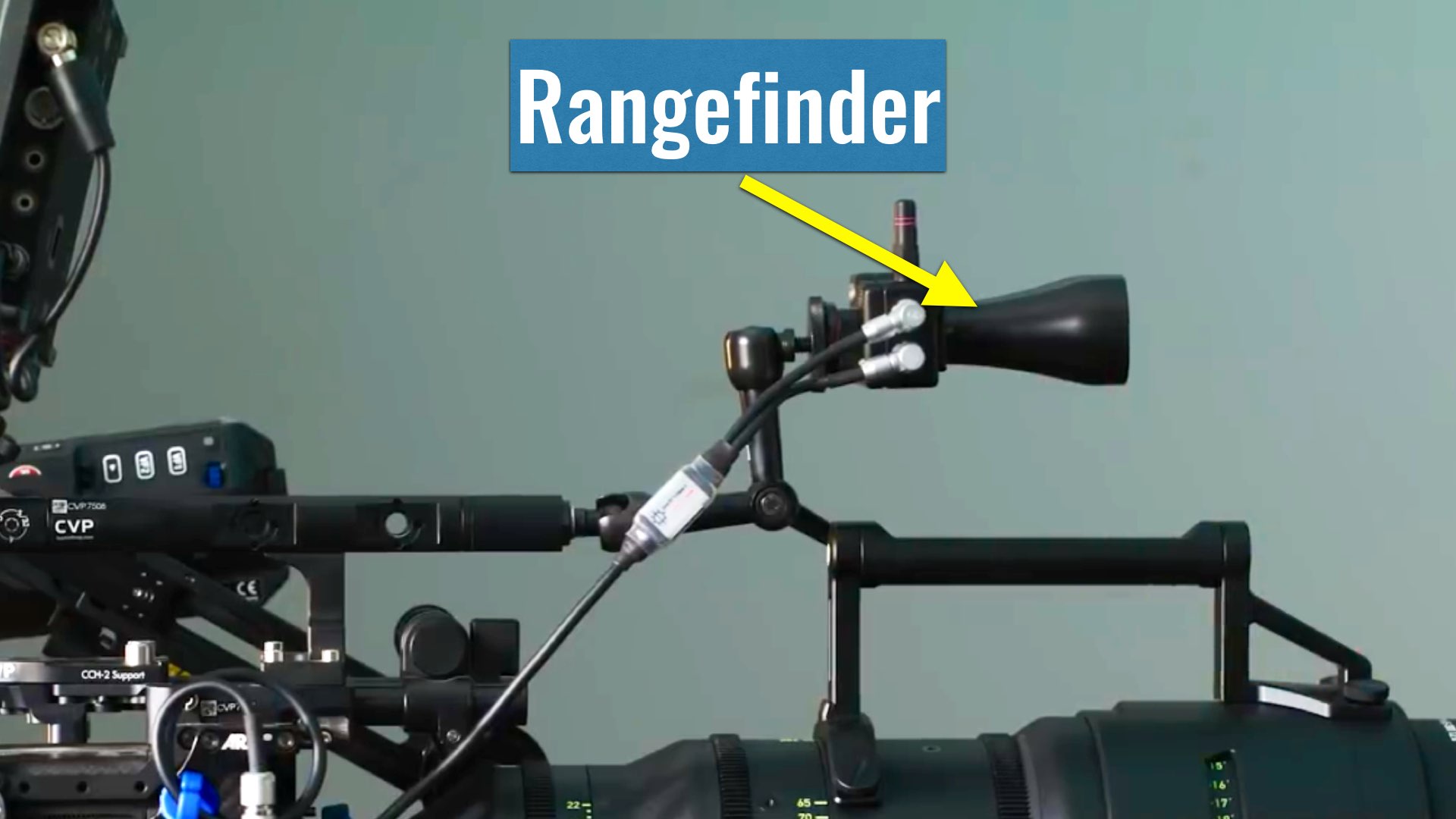
Matte box
Matte boxes are being used for basically two main goals, which are controlling the light enters to the lens, and the second is adding filtration (ND filters for instance). A professional matte box must be versatile, so filters and adapters can be added and removed easily and fast during expensive production.
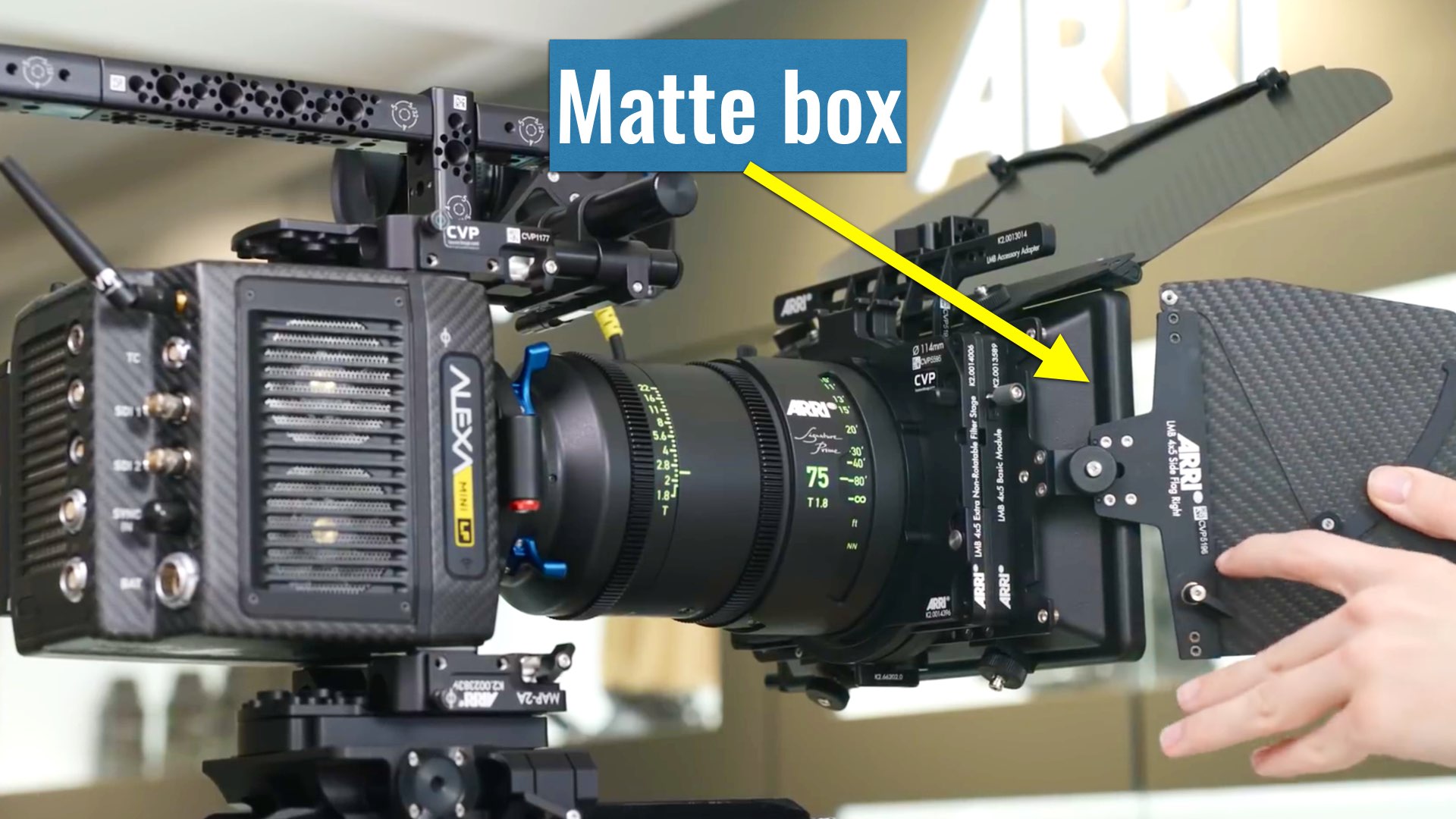
Power management
Efficient power management is crucial, not just for the camera itself, but for powering all the components and devices described above. Batteries that are located on the camera are called ‘Onboard batteries’. There are three mounting systems: V-Lock, Gold-mount, and B-mount which is a new mounting method invented by ARRI that might become a new standard. Furthermore, there’re devices that allow you to attach more than one battery, and change them without powering down the camera. Basically, you wouldn’t want to turn off the camera during production since powering a cinema camera back up can take a while, as compared to mirrorless or DSLRs. To sum it up, explore the slide below that shows the components we’ve written about:
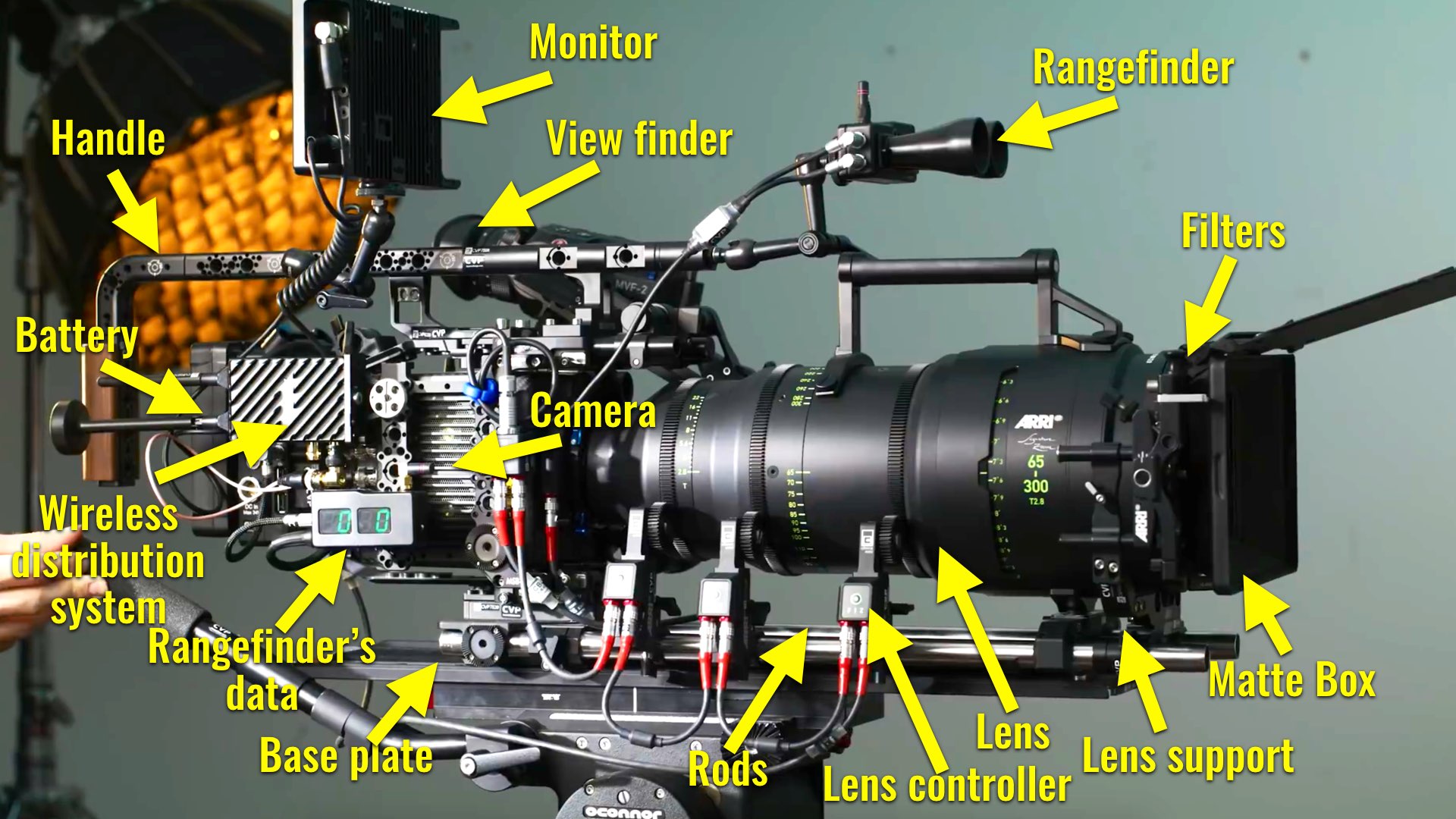
For further info, watch the excellent CVP video below:



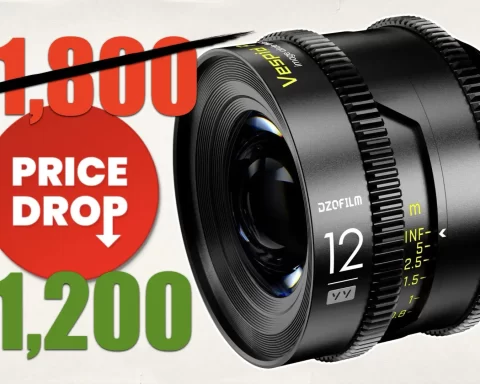
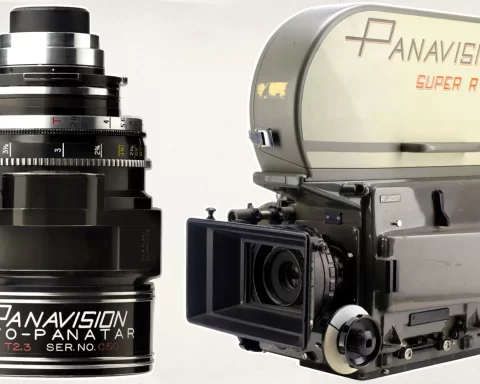
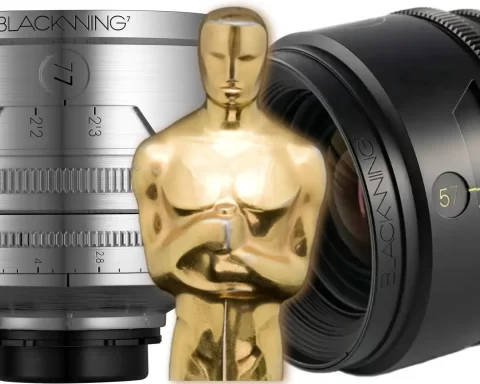
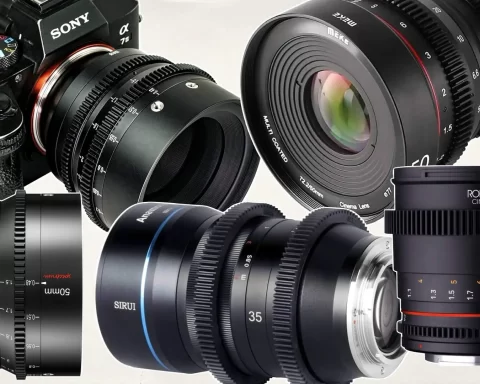

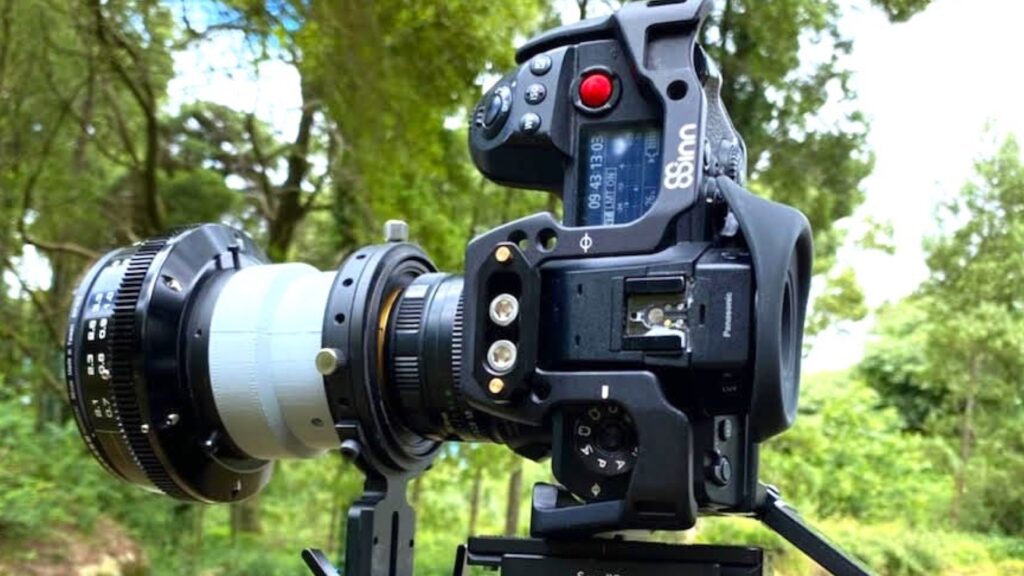
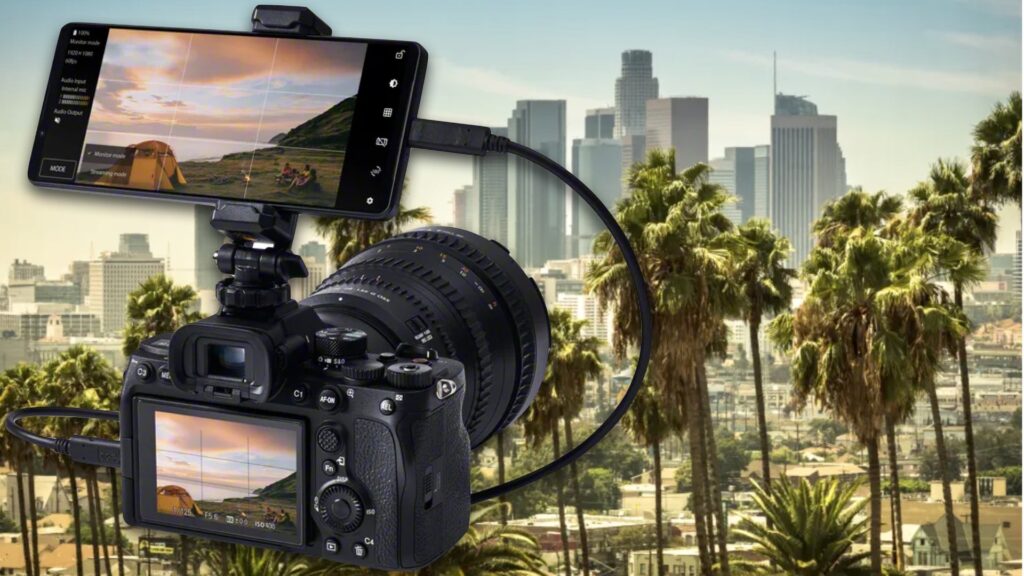

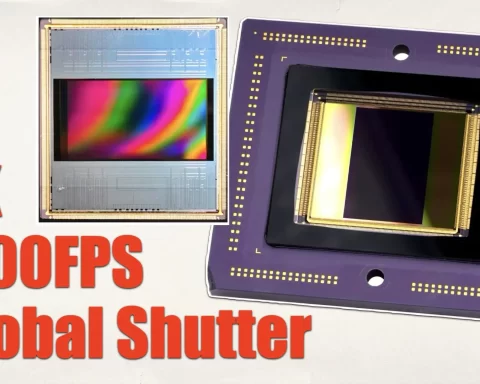

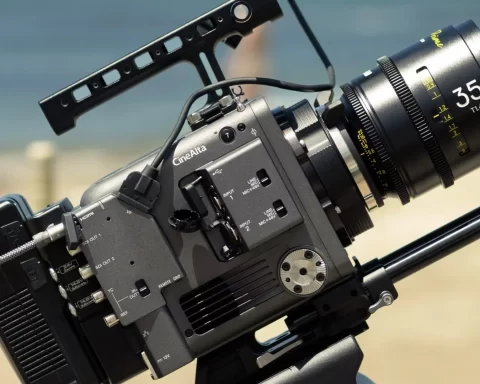

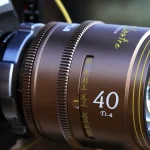
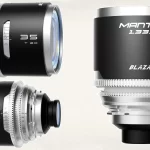
A few more details could have ameliorated this article. Those horns above the lens are actually part of the rangefinder’s system whose role is to direct ultrasonic pulses, which hits an object and bounce back to be captured by the receiving sensor (Transducer), then measured with an electronic circuit for time difference (between emitting and receiving) and translated into path distance